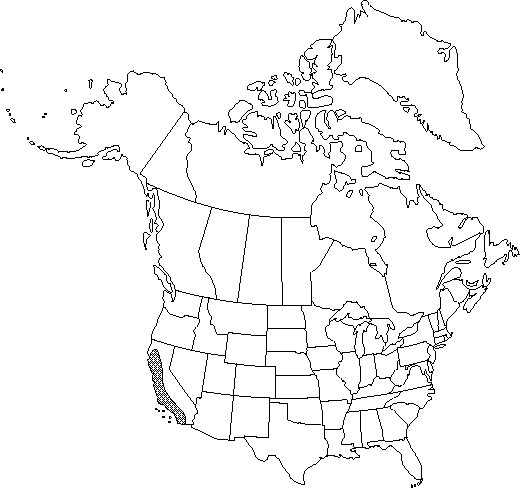FNA>Volume Importer |
imported>Volume Importer |
||
| Line 42: | Line 42: | ||
|publication year= | |publication year= | ||
|special status= | |special status= | ||
| − | |source xml=https:// | + | |source xml=https://bibilujan@bitbucket.org/aafc-mbb/fna-data-curation.git/src/bb6b7e3a7de7d3b7888a1ad48c7fd8f5c722d8d6/coarse_grained_fna_xml/V3/V3_490.xml |
|genus=Argemone | |genus=Argemone | ||
|species=Argemone munita | |species=Argemone munita | ||
Revision as of 00:02, 28 May 2020
Stems 6-15 dm, with 10-30 prickles per cm⊃2; on main stem below capsule. Leaf blades: surfaces sparingly to moderately prickly on veins and intervein areas. Capsules moderately prickly, surface not obscured, prickles uneven, longest 5-8 mm. 2n = 28.
Phenology: Flowering spring–summer; fruiting summer–fall.
Habitat: Dry foothills and slopes
Elevation: 100-1500 m
Distribution

Calif., Mexico (Baja California).
Discussion
Argemone munita subsp. munita grows in the Coast Ranges. Intermediates between it and subsp. rotundata are frequent.
Selected References
None.
Lower Taxa
None.